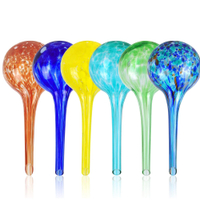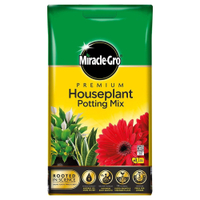How to care for a prayer plant: an expert guide to keep your sunshine-loving plant happy
This Brazilian-native plant has particular needs but with our expert's help you'll have it thriving in no time
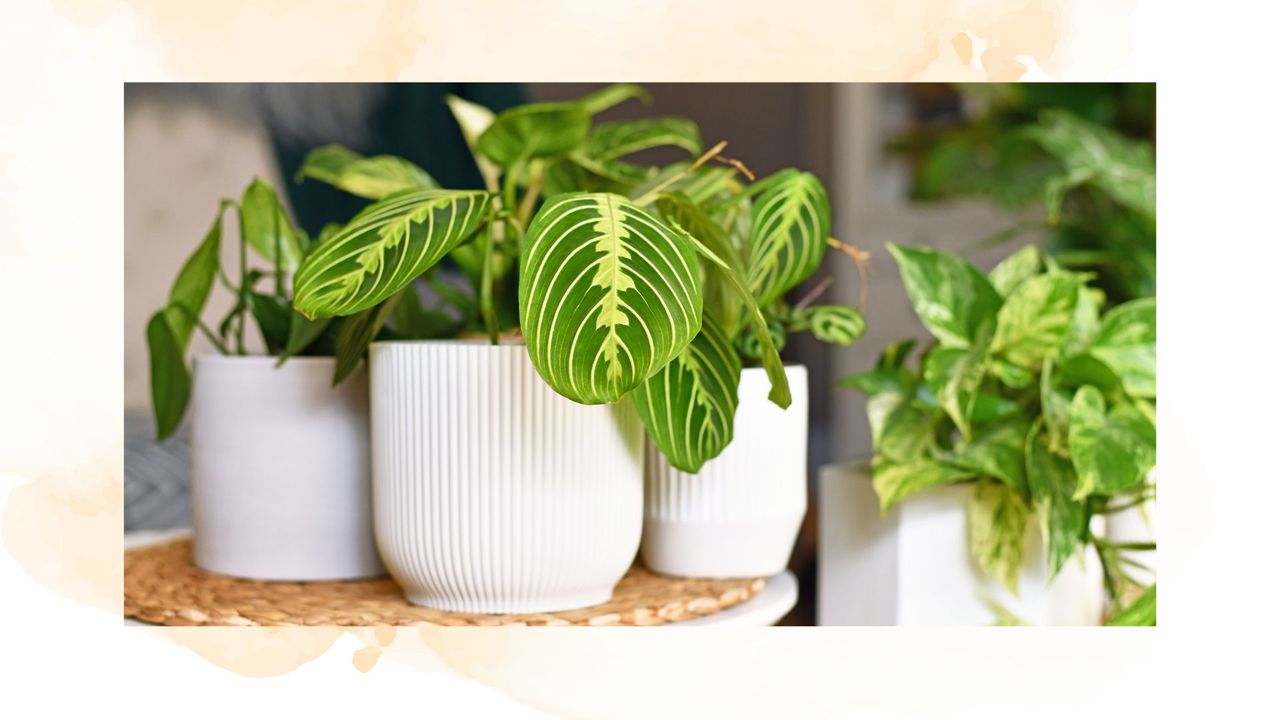

As one of the more unique houseplants, caring for the prayer plant can be somewhat mysterious, especially considering its native tropical conditions. However, if you're up for the challenge we spoke to plant experts for their foolproof guide to keep the vibrant species happy in your home.
Knowing how to care for indoor plants isn't exactly a walk in the part, as each species requires a slightly different care routine. For instance, knowing how to look after a monstera plant probably won't help you master caring for a bonsai tree because each has unique needs.
This is why it's important to know your plant's specific requirements, even more so when it's an unusual variety like the prayer plant. Luckily, the plant experts reveal all you need to know to help yours thrive.
How to care for a prayer plant: an expert guide
Prayer plants require a little more TLC than caring for a peace lily, which is one of the easiest houseplants to keep alive.
"Caring for a prayer plant is a rewarding experience for houseplant enthusiasts," says Petar Ivanov, garden and plant expert. "Known for its stunning, vibrant foliage and unique ability to fold its leaves upward at night, mimicking hands in prayer, this tropical beauty adds charm to any indoor space."
He adds, "With the right care, a prayer plant can flourish as a captivating centrepiece in your home – whether you're a seasoned plant parent or a beginner, this guide will help you keep your prayer plant healthy and happy."
1. Choose the right spot in the sun
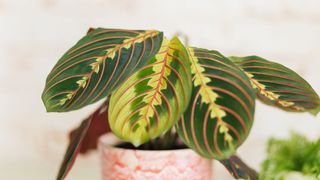
Giving your plant the wrong amount of sunlight is one of the most common houseplant mistakes and can lead to major health issues for them. It's one of the main reasons your peace lily can have brown tips.
Sign up for the woman&home newsletter
Sign up to our free daily email for the latest royal and entertainment news, interesting opinion, expert advice on styling and beauty trends, and no-nonsense guides to the health and wellness questions you want answered.
"Prayer plants thrive in bright, indirect sunlight. Avoid placing them in direct sunlight as this can scorch the leaves. They can tolerate lower light conditions, however, this may slow down their growth a little bit," explains Fiona Jenkins, plant expert at MyJobQuote.

With over 25 years of experience under her belt, Fiona is a trained gardener who offers advice and insight to several trade companies and homeowners. She has also been featured as a gardening expert for several publications.
2. Establish a watering routine
It can be quite a challenge to master your houseplant watering routine, especially if you have a varied selection of plants in your home. But being organised and using watering stakes to help you can make all the difference.
Graham Smith MCIhort, horticulture expert at LBS Horticulture says, "The soil of your prayer plant should be kept moist at all times from spring to autumn, but do not allow it to be wet. Ideally, water it little and often, and allow any excess water to drain away completely."
He goes on to say, "Prayer plants are sensitive to the chemicals in tap water, so it is better to use distilled water, filtered water or rainwater. In winter, you will not need to water the plant as often and should keep the soil just moist."
AMFUN Plant Watering Globes Stakes, £14.99 for 6 at Amazon
These attractive hand-blown colourful glass watering devices are an easy way to employ a self-watering feeding system for your indoor potted plants. Perfect to prevent overwatering your prayer plant.

Graham has extensive knowledge in the horticultural and gardening industries, and prides himself on using this to help gardeners of all skills create their perfect outdoor space.
3. Make sure it's in the appropriate type of soil
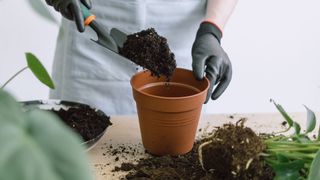
In the same way, it's important to know your soil type for your outdoor plants, ensuring you've filled your pot with the right type for your houseplants is key.
Petar says, "Use a well-draining potting mix, such as one made for houseplants, enriched with peat moss or coconut coir. Feed monthly during spring and summer with a diluted, balanced liquid fertiliser and avoid over-fertilizing, which can burn roots."
Feeding and watering your plants will change depending on season, how you care for houseplants in winter is vastly different than how you should in the summer months.
Miracle-Gro Premium Houseplant Potting Mix: £10.94 at Amazon
This houseplant soil is perfect for supplying your prayer plant with all the right nutrients. A houseplant compost like this one gives your plant enough food for three months and it's built to encourage root growth and balance air in the soil.

Peter has been a gardening and plant expert at Fantastic Gardeners for over 8 years, he is now one of the company's top-performing experts and manages over 6 teams of gardeners. He works on creating stunning landscapes and prioritises sustainability in his gardening methods.
4. Check the humidity levels are adequate
As the prayer plant is native to Brazil its required conditions need to mirror that. And whilst you might be trying to reduce the humidity in your home, your prayer plant will need a different eco-system of its own.
"The best temperature for a prayer plant is between 18 – 28 degrees Celsius. They also enjoy high humidity levels. Bathrooms or kitchens are ideal locations due to the higher humidity levels. Keep the plant away from cold draughts," explains Fiona.
It can be a good idea to keep plants that prefer higher humidities together, that way you're not making more rooms in your home humid when you don't need to.
Mini Digital Indoor Thermometer, £6.49 at Amazon
This affordable Indoor thermometer can accurately monitor humidity levels with ease.
5. Know when and how to repot the plant
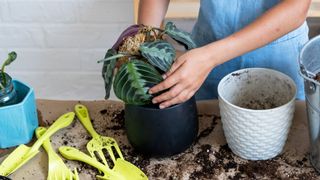
Whilst you might think that knowing how to repot a plant is more important, we'd actually argue that knowing when to repot a plant is higher on the priority list. Repotting a plant too prematurely can be extremely damaging to its health.
Fiona says, "The best time to re-pot a prayer plant is in spring or early summer. Fill the new pot with a layer of fresh potting mix. Gently remove the plant from its current pot. Loosen the root ball and remove any excess soil. Position the plant in the centre of the new pot, ensuring that it is at the same depth as it was in the old pot."
She also explains that choosing the right type and size of pot is key too. Fiona says, "When choosing a pot for the prayer plant, choose one that is slightly larger than the current pot. A pot that is too large could lead to overwatering and root rot.
"Terracotta pots are a great choice as these allow excess moisture to evaporate. Plastic pots can also work well as they retain moisture better. Well-draining potting mix is crucial for a healthy prayer plant," she adds.
6. Protect the plant from pests and diseases
Unfortunately, it's not just your outdoor plants that can get overrun with creepy crawlies. In fact, your plants can be the source of your tiny black flies in the home problem.
"Spider mites, mealybugs, and aphids are common, so use neem oil or insecticidal soap to treat infestations. Some of the possible diseases include root rot from overwatering or poor drainage and leaf spot diseases caused by over-misting without good airflow," explains Petar.
DD Organic Neem Oil: £12.49 at Amazon
If you want to make sure no pests are reaping the rewards of your green thumb then applying this neem oil to the soil and stems is a great deterrent.
FAQs
How to propagate a prayer plant
Looking to maximise your plant collection? Propagation and cuttings are some of our favourite sustainable gardening ideas both inside and outside.
Graham points out that prayer plants can be propagated by the division method and can be done when you're repotting the plant in springtime.
He says, "Gently pull apart the root ball with your fingers, and a clump from the side should come away by itself without needing to be forced. Check that each side clump that you are using has a part of the root system attached. If the clump does not come away by itself, you can cut it off with a clean knife."
Once you've done this repot the clump into fresh compost and into pots that are slightly larger than the new rootball of the old plant.
How do I know if my prayer plant is happy?
Our plants usually tell us when we need to give them a little more attention and care. Whether they start to grow mould on their topsoil or begin drooping, there's always a telltale sign they're unhappy.
"A happy prayer plant will have deep, rich green leaves with distinct markings. The leaves should be smooth, velvety, and free from any spots or blemishes. You should notice new leaves emerging regularly," explains Fiona.
"The plant should show its signature ‘prayer’ movement by raising its leaves at night and lowering them during the day. It’s not common for a prayer plant to flower indoors. However, if your prayer plant does flower, this is a sign of optimal growing conditions," she adds.
It's always a good idea to give your plant an inspection every time you water it, just to make sure you're not missing any small signs of distress.
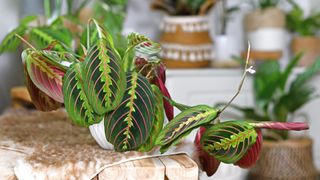
Do prayer plants have a winter domancy period?
It's no secret that our plants are reactive to the change in seasons and sometimes need a little helping hand to survive more extreme temperatures. Prayer plants are not exempt from this.
"Prayer plants don’t go truly dormant in the winter. However their growth will slow down significantly," explains Fiona.
"During winter, reduce the frequency of watering. Overwatering can lead to root rot, so make sure you let the soil dry out between waterings. If your home’s humidity is low, consider using a humidifier to keep the air moist. Mist the plant regularly to increase the humidity," she adds.
In the same way you protect plants from the frost outdoors, your houseplants will need not only a different care routine but also a more thorough one.
The experts are also quick to point out just how important it is to clean your plant's leaves properly. Because a prayer plant has extremely reactive leaves that adore sunshine it's important to keep them dust-free and unclogged.

Emily joined woman&home as a staff writer after finishing her MA in Magazine Journalism from City University in 2023. After writing various health and news content, she now specialises in lifestyle, covering unique cleaning hacks, gardening how-tos, and everything to help your houseplants thrive.
-
 Ruth Langford’s utility jacket is an ageless staple for the spring breeze
Ruth Langford’s utility jacket is an ageless staple for the spring breezeRuth Langsford took her jeans and white T-shirt outfit to another level for spring with her timeless twill utility jacket
By Emma Shacklock Published
-
 Exclusive: Lorraine Kelly shares why she doesn't feel (or act) her age – 'I've got no intention of growing up'
Exclusive: Lorraine Kelly shares why she doesn't feel (or act) her age – 'I've got no intention of growing up'In our exclusive interview, Lorraine opened up on 'enjoying every second' of growing older
By Caitlin Elliott Published
-
 Interior paint colour trends 2025: 10 hues you'll be seeing everywhere this year
Interior paint colour trends 2025: 10 hues you'll be seeing everywhere this yearLooking to refresh your space? These trending colours are just the thing to transform your home one room at a time
By Emily Smith Published
-
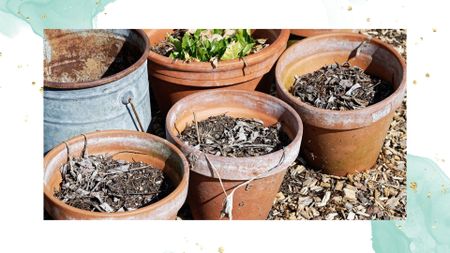 Can you reuse compost from pots? Garden expert reveals his secret for successfully reusing this nutrient-rich soil amendment
Can you reuse compost from pots? Garden expert reveals his secret for successfully reusing this nutrient-rich soil amendmentIf you're looking to keep your efforts affordable and sustainable, it's time to reuse your old compost and here's how
By Emily Smith Published
-
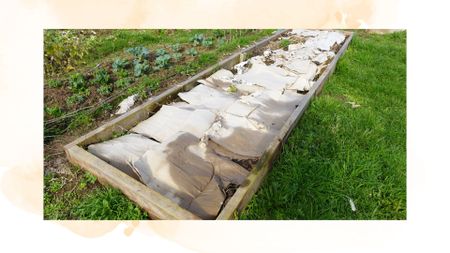 How to use cardboard in your garden: 6 ways to help plants, from enriching soil to preventing weeds
How to use cardboard in your garden: 6 ways to help plants, from enriching soil to preventing weedsOur team of experts explain how to use cardboard in the garden to nurture your plants and soil
By Emily Smith Published
-
 Amanda Holden reveals the pattern she loves most for dressing her home – it's perfect for maximalist fans
Amanda Holden reveals the pattern she loves most for dressing her home – it's perfect for maximalist fansThankfully her latest QVC collection is filled with this playful pattern so you too can use it to elevate your home decor
By Emily Smith Published
-
 Looking for kitchen colour inspiration? Look no further than Clodagh McKenna's joyful honey-toned space
Looking for kitchen colour inspiration? Look no further than Clodagh McKenna's joyful honey-toned spaceThe TV chef has truly mastered the art of embracing colour
By Emily Smith Published
-
 The most influential rug trends of 2025: 5 key styles to instantly refresh your space
The most influential rug trends of 2025: 5 key styles to instantly refresh your spaceIf you're in need of an interior pick-me-up this year's rug trends have something for every home
By Emily Smith Published
-
 Have you heard? Farrow & Ball is launching 9 new colours – including dramatic dark greens and a rich marmalade orange
Have you heard? Farrow & Ball is launching 9 new colours – including dramatic dark greens and a rich marmalade orangeThe rumours are true, the iconic paint brand has new hues. Get ready to explore nine sumptuous new shades and three reintroduced archived favourites
By Tamara Kelly Published
-
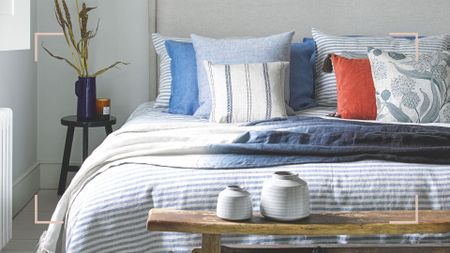 I've finally mastered how to dry bed sheets fast without a dryer thanks to these expert tricks
I've finally mastered how to dry bed sheets fast without a dryer thanks to these expert tricksNo tumble dryer? No worries, these simple steps can help speed up drying times
By Tamara Kelly Published
